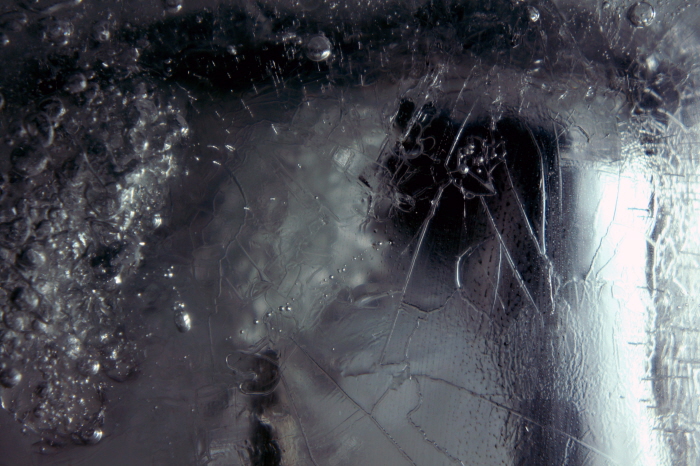Finished ice print in water tank removed from freezer.

Comparison of two finished ice prints formed around the water tank's central rod. The Waterlines ice printer did not create a stack of shaped ice layers in the manner we had planned which was exciting and intriguing. Instead of producing solid forms of layered ice, the printer created porous objects composed of variously sized ice platelets. Each print turned out vastly different than we anticipated but one prediction was proven correct: different patterns, frequencies and intensities of aeration from the air pumps produce very diverse ice formations. For example using more intense and more frequent aeration during the freezing process of the second print (right) created more sparse and delicate forms.

Close-up comparison of the same two finished ice prints revealed that increased aeration frequency and intensity in the second print (right) produced larger and more sparse ice platelets.

Close up of ice platelets from second print around central rod.

Unexpected ice formations at the top and sides of the water tank were a pleasant surprise.

Ice on side of water tank.
gLike


































